More and more newlyweds are trading cocktails on the beach and all-inclusive resort stays for adventure honeymoons packed with enriching and exciting experiences. Doing new things with your partner is a great way to strengthen your bond, so why not begin your new life together with a safari honeymoon to a beautiful destination in Africa?
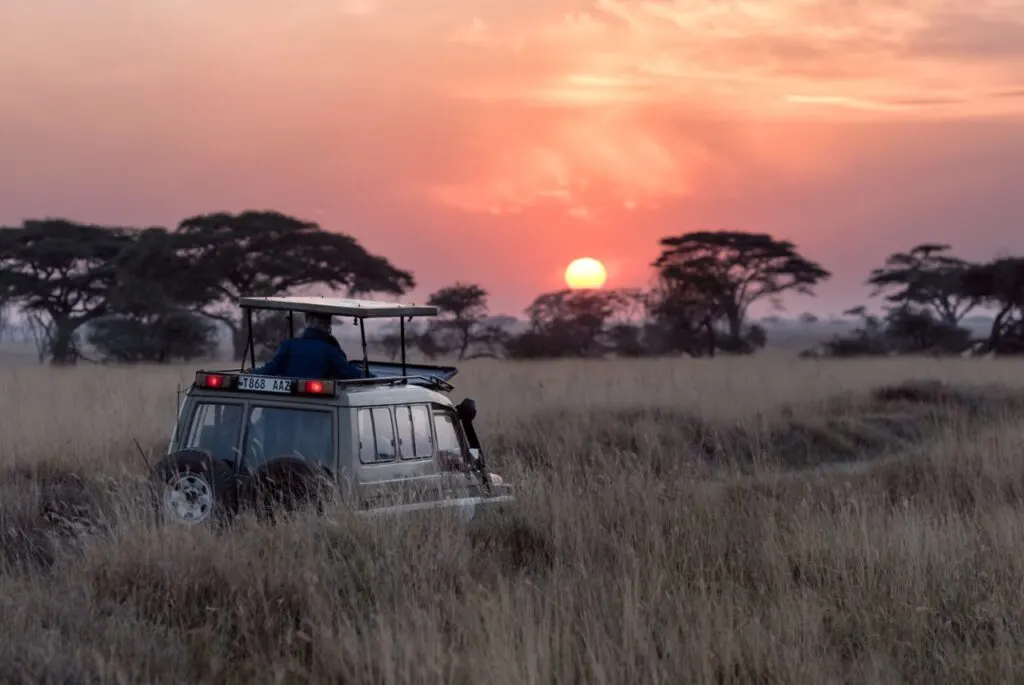
In this guide, we’ll show you some of Africa’s most amazing safari destinations and break down what you can expect on a safari honeymoon, plus will help you get a head-start on packing by suggesting a few items you’re going to want to have with you on a safari honeymoon.
7 Safari Lodges Perfect for a Honeymoon
When it comes to planning your Safari honeymoon, the lodge or camp you stay at will make a big difference in your experience and the cost of your trip.
Ulusaba Safari Lodge, South Africa
There is a private game reserve in South Africa that Sir Richard Branson owns. The Ulusaba Safari Lodge is near the Kruger National Park and is within about 33,000 acres of open bush. There are hills that rise above the terrain, providing travelers with breathtaking views of the landscape.
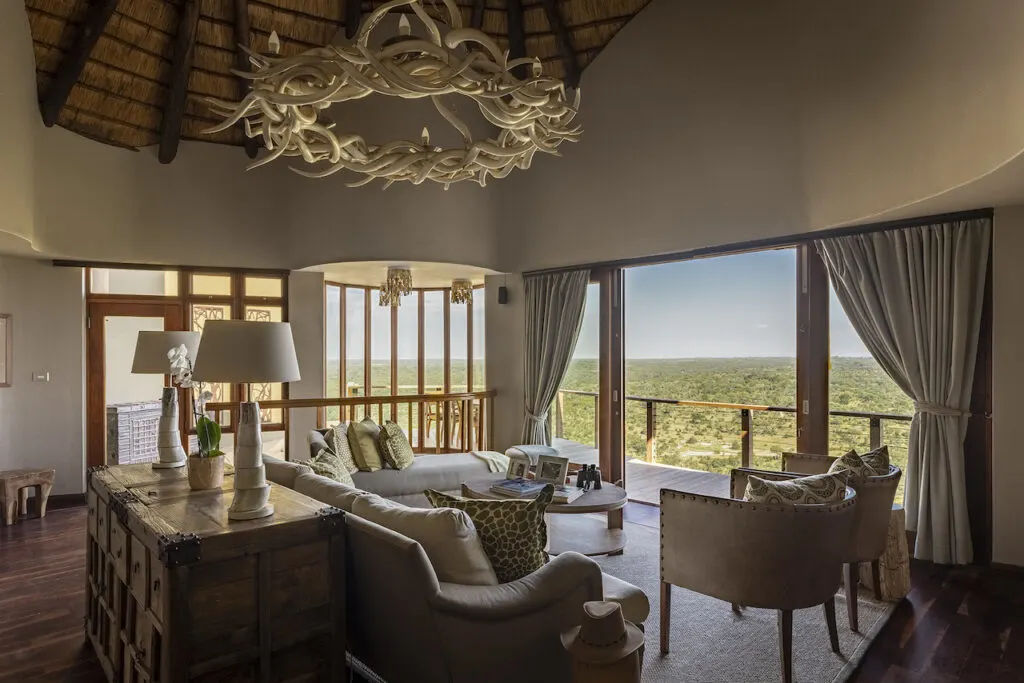
The Ulusaba Safari Lodge has two main lodges, namely the Rock Lodge and Safari Lodge.
Those who seek romance in the African bush can request a private meal for two, spent under the stars for a perfect mix of safari and intimacy. They can also ask for a special bath oils service.
Little Ongava, Namibia
Little Ongava is within the private Ongava Game Reserve and is a sister resort to the Ongava Lodge. Little Ongava has three luxurious suites, making it one of the most exclusive and romantic safari destinations in the world.
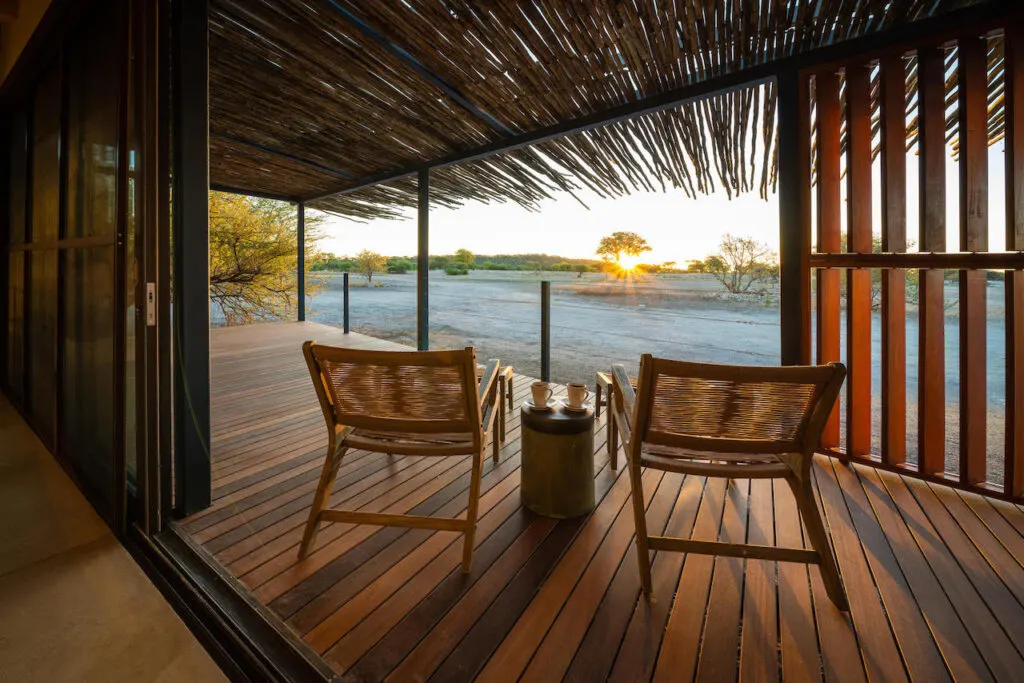
Little Ongava sits on a hill and offers astonishing African savanna views. While overlooking a surrounding bush, Little Ongava guests also get to see the waterhole below.
The suites here also exude grandeur with private viewing decks, indoor and outdoor showers, and personal plunge pools. One can also expect impeccable service from its staff.
Londolozi Private Granite Suites, Kruger
Londolozi Private Granite Suites is a luxurious safari lodge located in the heart of the Sabi Sand Game Reserve, which is part of the Greater Kruger National Park in South Africa. This exclusive lodge is renowned for its exceptional wildlife viewing opportunities, high-end accommodations, and commitment to conservation and sustainable tourism.
Guests at the lodge can enjoy a wide range of safari activities, including morning and evening game drives in open 4×4 vehicles, guided bush walks, and birdwatching excursions.
Angama Mara, Masai Mara
Angama Mara is a renowned safari lodge located in the Maasai Mara region of Kenya, one of Africa’s most iconic and wildlife-rich destinations. The lodge is known for its stunning location on the edge of the Oloololo Escarpment, which provides guests with breathtaking views of the Maasai Mara below.
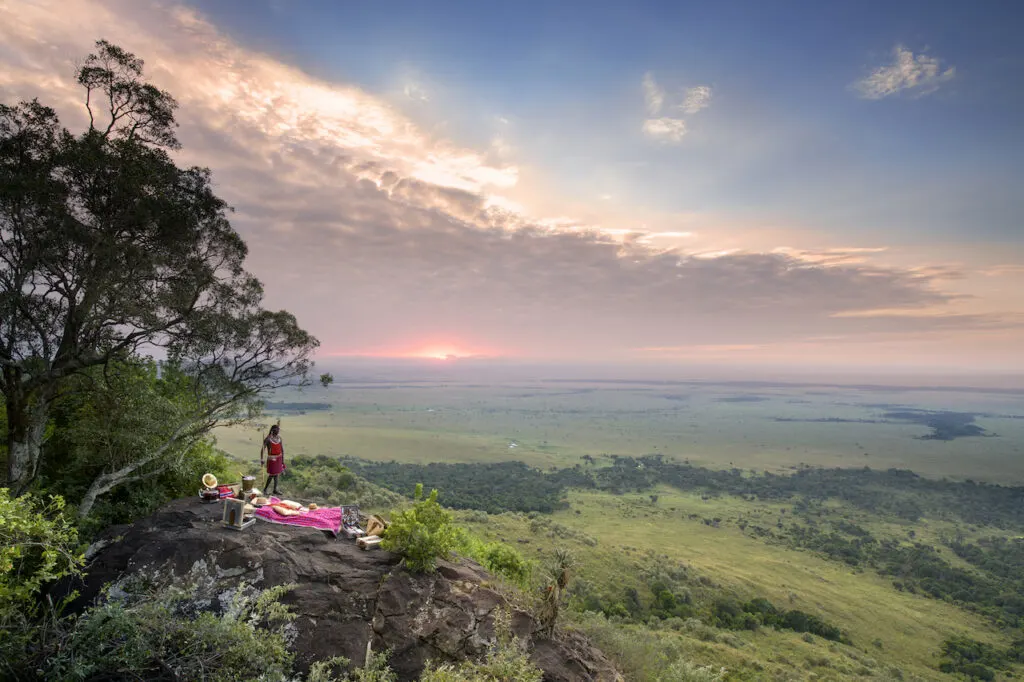
Angama Mara is situated in the southwestern part of the Maasai Mara, overlooking the Great Rift Valley. The lodge offers 30 spacious and elegant tented suites divided into two separate camps, each with its own guest area and dedicated staff.
Singita Sasakwa Lodge, Serengeti
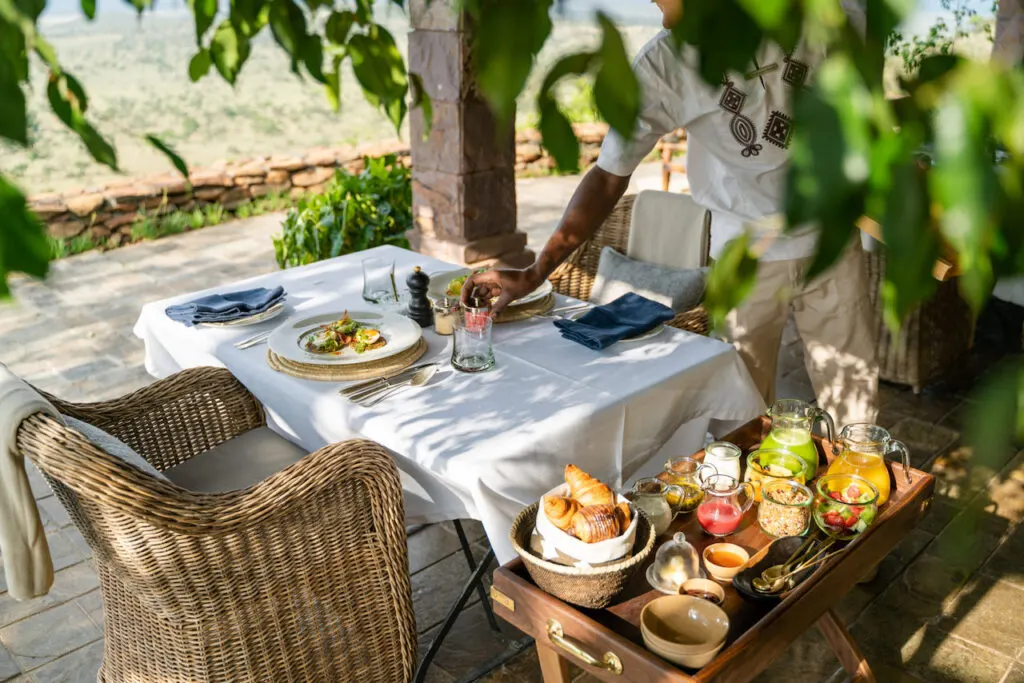
Singita Sasakwa Lodge is a luxurious safari lodge located in the Grumeti Reserves, adjacent to the Serengeti National Park in Tanzania. It is part of the prestigious Singita portfolio of lodges and reserves, known for offering exceptional wildlife experiences, luxurious accommodations, and a commitment to conservation and responsible tourism.
Singita Kwitonda Lodge, Volcanoes National Park
Singita Kwitonda Lodge is a luxury safari lodge located in Volcanoes National Park in Rwanda. This exquisite lodge is known for its stunning natural surroundings, upscale accommodations, and its unique focus on mountain gorilla trekking and conservation efforts.
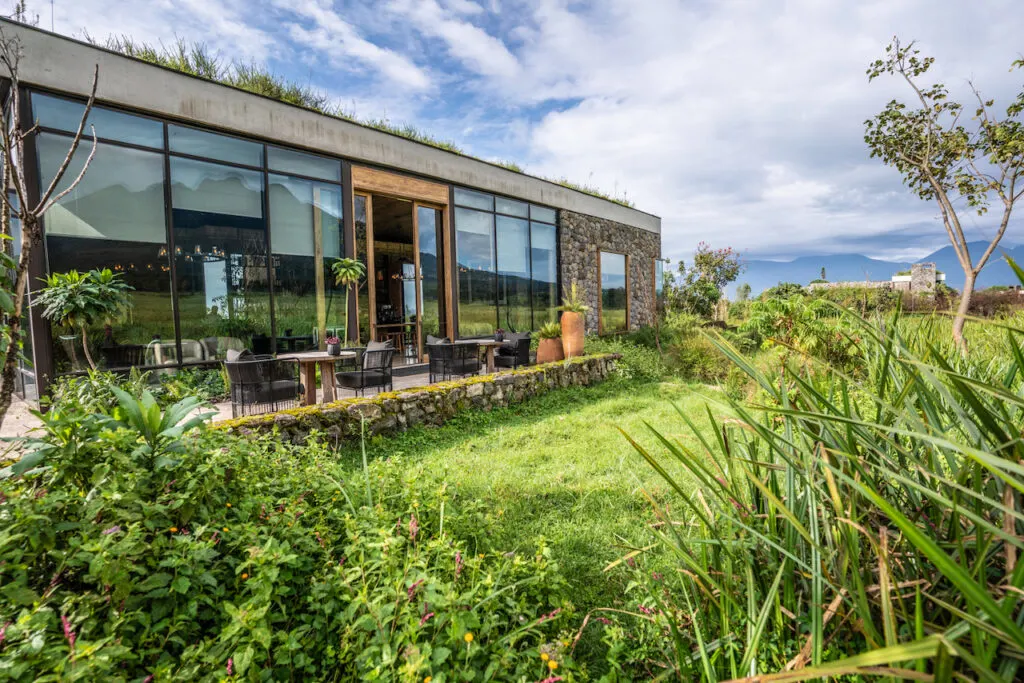
Singita Kwitonda Lodge is ideally situated for guests interested in gorilla trekking adventures. The lodge provides access to the mountain gorillas of Volcanoes National Park, allowing guests to embark on guided treks to observe these endangered primates in their natural habitat.
Xigera Safari Lodge, Okavango Delta
Singita Sasakwa Lodge is a luxurious safari lodge located in the Grumeti Reserves, adjacent to the Serengeti National Park in Tanzania. It is part of the prestigious Singita portfolio of lodges and reserves, known for offering exceptional wildlife experiences, luxurious accommodations, and a commitment to conservation and responsible tourism.
The Best Places To Go On An African Safari Honeymoon
Kenya, Uganda, Botswana, and Tanzania in East Africa are home to some of the most popular African safari sites.
Tanzania & Kenya Honeymoon Safaris
Safari-goers to Tanzania will get a chance to witness the Great Migration, a yearly trek made by over 1 million wildebeest (and other animals) in search of water, and learn about the land and local culture from tribes who have called the Rift Valley home for thousands of years.
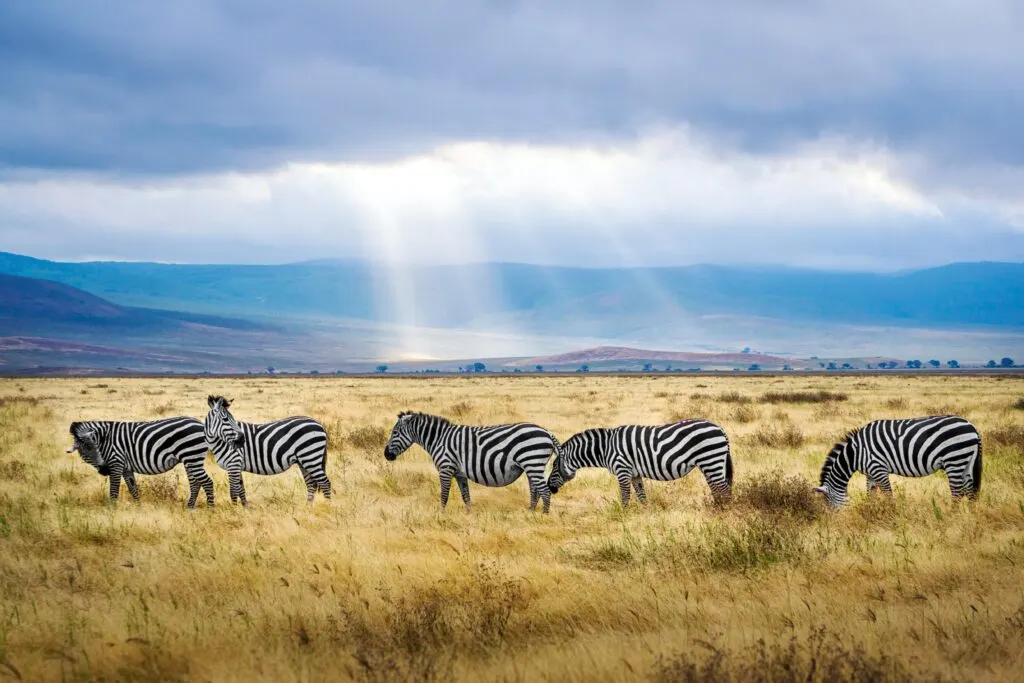
You’ll also roam the plains in search of Africa’s ‘Big 5’ – lion, leopard, rhino, elephant and African buffalo. East African safaris provide the best chance to see all 5. Botswana and Tanzania are among the most expensive safari locations, while budget and mid-range safaris are more prominent in Kenya.
South Africa Honeymoon Safaris
Finally, South Africa is quickly gaining attention among the new wave of safari enthusiasts. South Africa has a beautiful landscape and a diverse wildlife population plus a thriving wine region, and cities like Johannesburg, Cape Town, and Pretoria are hip and chic with a bustling nightlife and restaurant scene. Safaris in South Africa cater to a younger crowd and are much more affordable and customizable. For example, you can add a wine-tasting or vineyard tour to safari packages in the Cape.
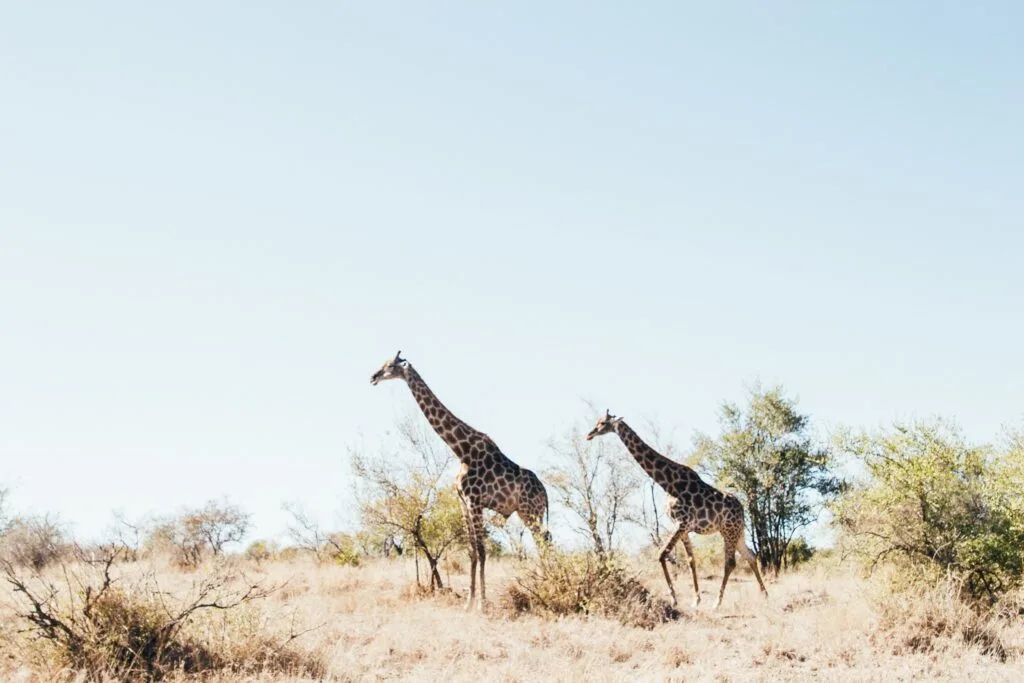
Uganda Honeymoon Safaris
Uganda is the most affordable option in East Africa. Uganda is known for its diverse wildlife and stunning natural landscapes, making it an excellent destination for safaris.
One of Uganda’s most famous safari activities is gorilla trekking in Bwindi Impenetrable National Park and Mgahinga Gorilla National Park. Also, Kibale National Park is renowned for its chimpanzee-tracking experiences.
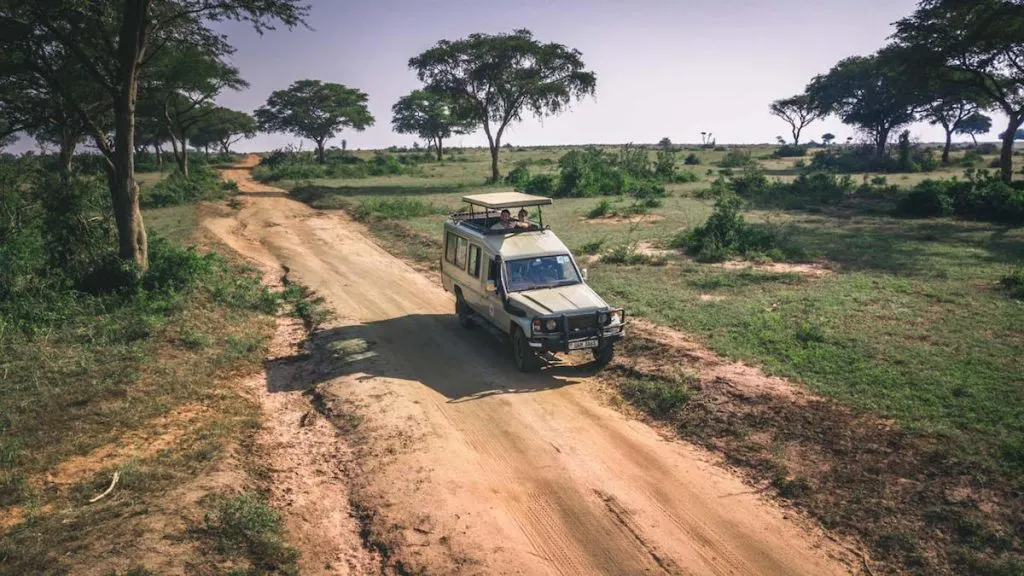
East African safaris are also popular because of their proximity to beautiful beach destinations like Zanzibar and the Seychelles. Many luxury safari companies offer add-ons to these romantic African honeymoon spots that include flights and a few nights in a luxury resort.
Rwanda Honeymoon Safaris
If you want to see gorillas in their natural habitat, you can take a gorilla trek in Rwanda or a small protected region in the Congo, but there are strict time limits to how long you can spend with them. You can add a gorilla trek to a safari package, or do the trek on its own.
What Are Accommodations Like On Safari?
That’s entirely up to you! There are hundreds of safari operators to choose from offering budget, mid-range, luxury, and ultra-luxury packages. You can choose your package based on whatever you’re comfortable with.
Budget safari accommodations are little more than a tent with a sleeping pad and sleeping bag. Facilities consist of an outhouse somewhere in the park, and there will be no running water or electricity.
Mid-range accommodations are usually locally owned motels or hotels. Expect a few nights in tents as well if you go with a mid-range package. If you don’t want to camp at all, you can spend a few dollars more to stay in hotels only.
Luxury and ultra-luxury safari lodges have all the comforts of home. Tents are large and intricate with separate rooms for eating, lounging, and sleeping. Lodges in the middle of nowhere have romantic touches like wrap-around porches or standalone clawfoot bathtubs overlooking the savannah, creating an ambiance of romance for your safari honeymoon.
Luxury accommodation packages also include butler and housekeeping services, a private chef, and a fully stocked minibar with premium spirits, beers, and wine.
How Long Should Your Safari Honeymoon Be?
The trip to Africa from the United States takes almost an entire day, so a safari is definitely not a weekend getaway. Most experienced safari-goers recommend spending at least 8 – 10 days on safari in order to get a full experience. If you want to really immerse yourself in nature, spend 2 or 3 weeks on a safari honeymoon. Extra activities to fill your days include romantic hot air balloon rides, tribal visits, climbing Mt. Kilimanjaro, and walking tours.
That being said, 3 or even 2-night group safari packages are available.
When Should You Plan Your Safari Honeymoon?
A safari honeymoon can be done almost year-round in Africa depending on where you want to go. The least popular time of year to go is July when the weather can be stifling hot; however, the plains are dry and barren this time of year as well, so there is almost nothing obstructing your view of the wildlife if there is any around, and it’s when prices are at their lowest.
If you want to witness the Great Migration, the best time of year to go is between the months of May and December. By June, almost all the rain has cleared up and the savannah is crawling with animals. In October, things are starting to settle down as herds return to Kenya, and while animal sightings are still common, they are less frequent towards the end of the year.
The dry season in South Africa is between May and August and is the best of year to go on a safari honeymoon on the Cape, again because of the dying off of foliage.
If you want to see baby animals exploring their surroundings, plan your safari honeymoon between the months of January and May.
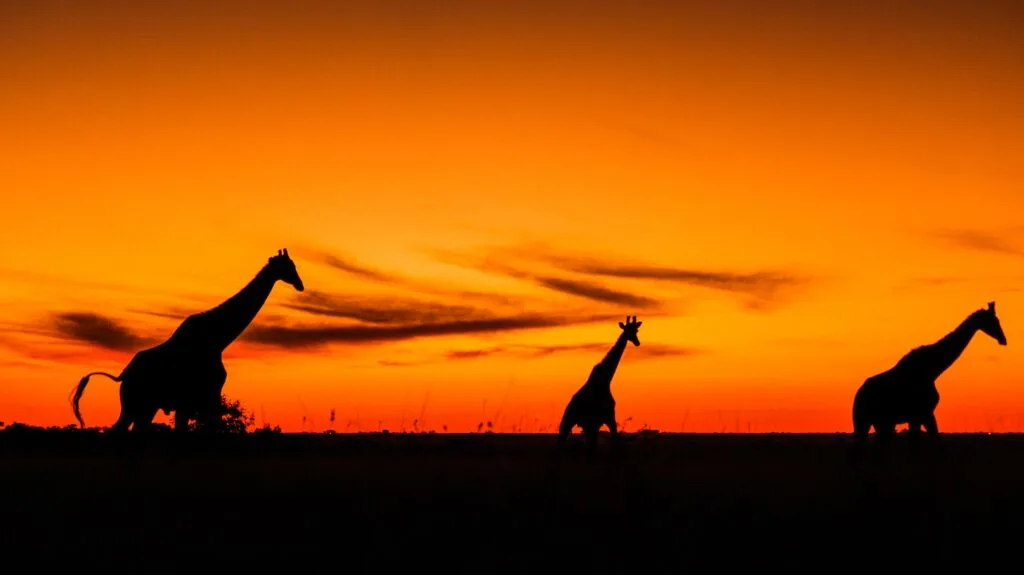
What To Bring On Your Safari Honeymoon
Traveling light will make your safari honeymoon easy and enjoyable, but there are a few essentials you should make sure to throw in your suitcase.
Clothing in neutral shades will help you blend into your surroundings and make you less noticeable to skittish animals who might run from loud, bright colors. Cotton and linen and thin, breathable fabrics that also provide enough cover to filter out UV rays. A wide-brimmed hat with a mosquito net face covering, sunglasses, binoculars, sunscreen, and bug spray for everyday use can be packed in your day bag. Also, be sure to bring a microfibre face covering to keep dust out of your mouth and nose while driving across the dusty terrain.
For footwear, pack sturdy hiking shoes that cover your toes and sandals to wear at camp. Bring enough layers for chilly camp nights and a raincoat, plus any bedding you might need if your tour operator doesn’t provide any. Most budget tours will give you a tent only and you are responsible for bringing your own sleeping bag or mat. Luxury operators provide all the bedding you need.
How Much Does A Safari Honeymoon Cost?
The cost of a safari varies greatly depending on where you want to go, what time of year you’re heading on safari, and what kind of accommodation you prefer. A safari in Africa can cost anywhere between $115 per person per day and over $1800 per person per day.
When traveling from North America, it’s almost always cheaper to fly to a major hub in Africa, and then book a connecting flight with a smaller, regional airline than it is to take a direct flight. Nairobi is the major hub for safaris in East Africa. In South Africa, it’s Cape Town and Johannesburg.
Delta Airlines has the most flights to Africa from the United States, with flights departing from Atlanta and New York to Johannesburg, Dakar, Lagos, and Accra (on the West and South coasts) at least once per day. Other airlines with direct service from the U.S. to Africa are Ethiopian, United, Egypt Air, Royal Air Maroc, Kenya Airways, Air Senegal, and Azores Airlines.
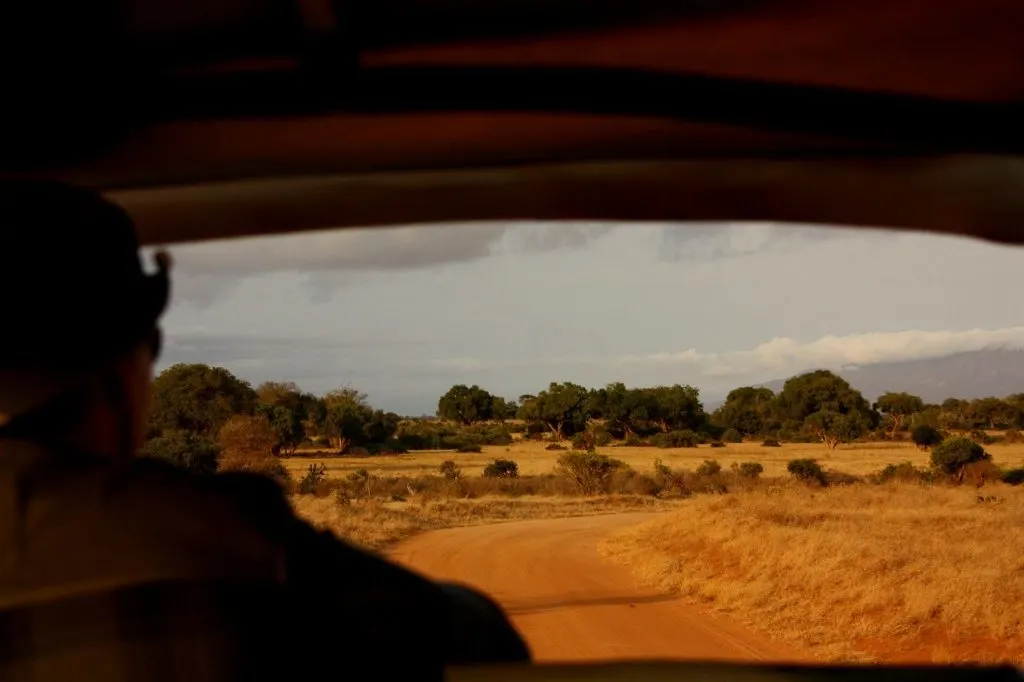
The cheapest flights from the United States to Africa leave from Chicago, New York, Miami, Atlanta, and Washington D.C. They start at around $600 and can go as high as $950.
There are also additional costs to consider like visas, vaccinations before you travel, gratuities, and extra excursions or meals and drinks not included in the cost of your package.
The short answer is that safari honeymoons can be quite expensive, but they are also highly customizable. If you want to skimp on accommodation and spend more on excursions, you can. On the other hand, if you want to shell out on accommodation on your safari honeymoon and go on fewer excursions, waking up in a remote part of Africa’s savannah is still an experience that can’t be beaten.
No matter how you design your safari honeymoon, one thing is guaranteed: it will be an adventure you won’t soon forget.
He is an expert travel advisor and enthusiast. He has traveled extensively in the USA, Central America, South America, and Europe. He has visited every Sandals Resort and is one of a select few Diamond Elite members of the Sandals Chairman’s Royal Club.
Dan graduated from Johnson & Wales University with an associate degree in Culinary Arts. Later he graduated from the University of Utah with a bachelor’s degree in International Studies with a focus on people and culture.

